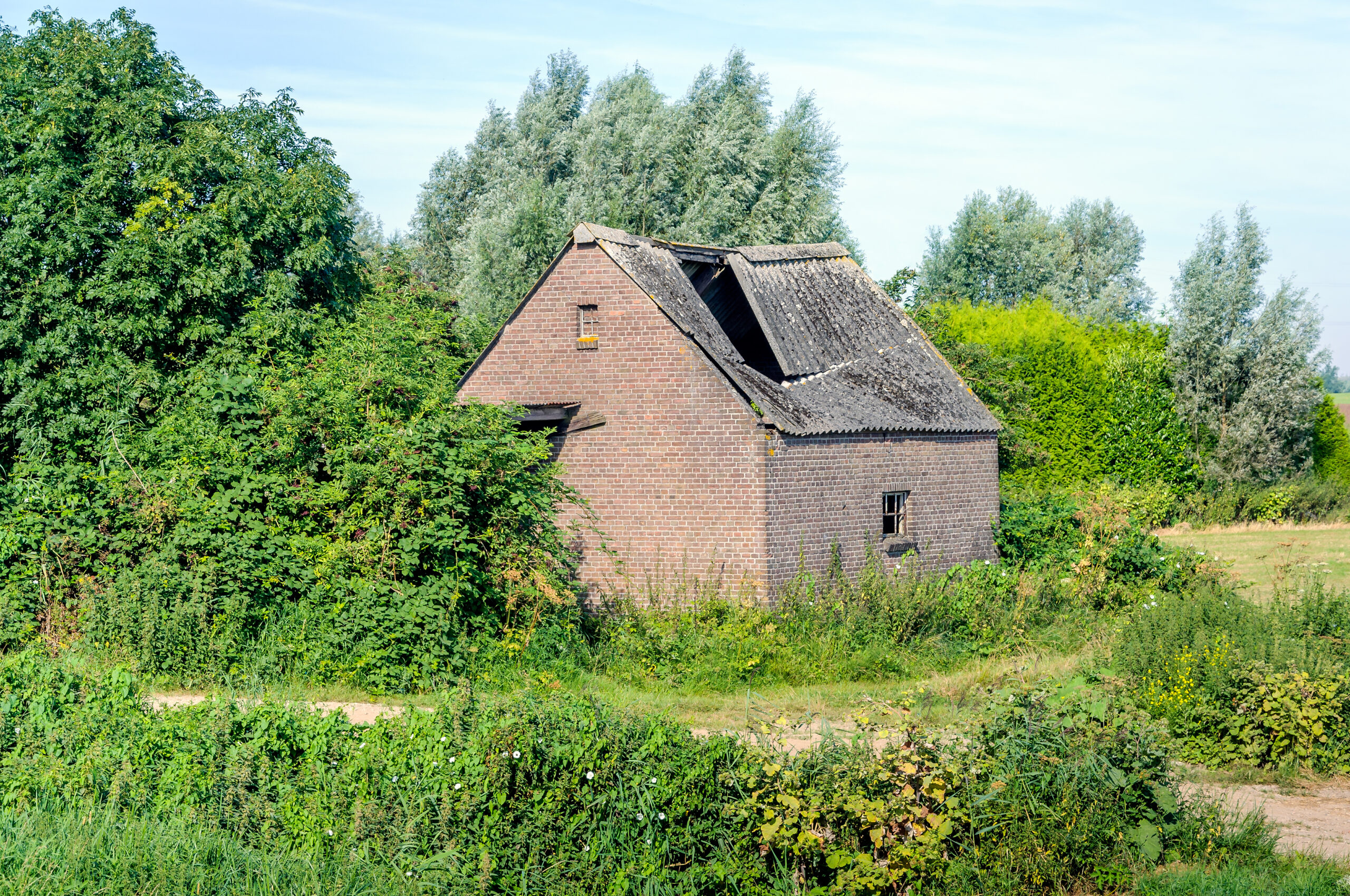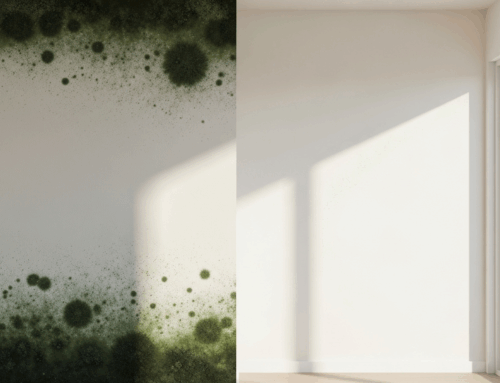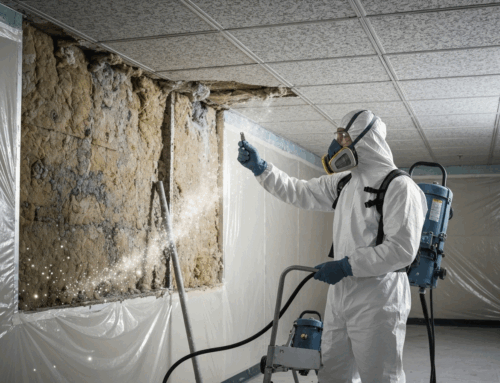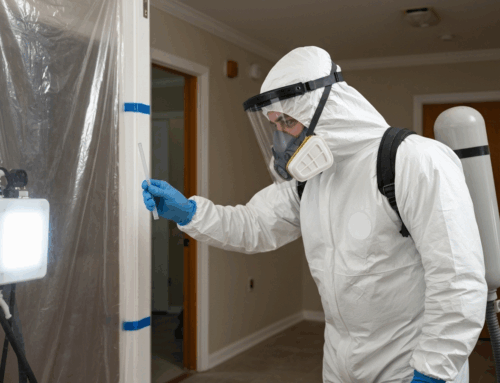Understanding Asbestos Hazards After Severe Weather
Severe weather events, from hurricanes to strong thunderstorms, can wreak havoc on homes and businesses across North Carolina. Beyond the immediate damage, property owners face a hidden danger: disturbed asbestos. When buildings are impacted by high winds, heavy rain, or flooding, materials containing asbestos can be torn apart, releasing microscopic fibers into the air. This airborne asbestos poses significant health risks, making professional North Carolina asbestos storm damage cleanup an essential consideration for maintaining indoor air quality and ensuring safety.
Asbestos was widely used in construction materials for its insulating and fire-resistant properties until the late 20th century. Structures built before 1980 are particularly likely to contain asbestos. Even in newer buildings, some asbestos-containing materials might be present. When these materials are undisturbed, they typically pose no immediate threat. However, the force of a storm can turn stable asbestos-containing materials (ACMs) into friable (easily crumbled) debris, leading to the release of dangerous fibers.
Identifying Potential Asbestos Materials in Damaged Properties
After a storm, it’s crucial for homeowners, property managers, and contractors in North Carolina to be aware of where asbestos might be lurking. Visible damage like broken siding, cracked flooring, or compromised roofing could indicate disturbed ACMs. Common materials that may contain asbestos include:
- Roofing materials: Shingles, felt, and mastic.
- Siding: Asbestos-cement siding panels.
- Insulation: Attic insulation (vermiculite), pipe insulation, and boiler insulation.
- Flooring: Vinyl floor tiles, linoleum, and the adhesives used to install them.
- Ceiling materials: Popcorn ceilings, ceiling tiles, and joint compound.
- Drywall and joint compound: Used extensively in older homes.
- Asbestos cement pipes: Used for water and sewer lines.
Any demolition, repair, or renovation activities following storm damage can inadvertently disturb these materials. If you suspect the presence of asbestos, it’s vital to exercise extreme caution and avoid contact with the damaged materials. Disturbing them can release fibers into the air, leading to inhalation and potential long-term health issues.
Essential Steps for North Carolina Asbestos Storm Damage Cleanup
Addressing North Carolina asbestos storm damage cleanup requires a systematic and professional approach to protect health and ensure compliance. Here are the key steps involved in a proper asbestos remediation process:
- Assessment and Testing: The first and most critical step is to have a qualified professional conduct an inspection and collect samples of suspicious materials for laboratory analysis. This determines if asbestos is present and, if so, the type and extent of contamination.
- Containment: If asbestos is confirmed, the affected area must be sealed off to prevent the spread of fibers. This involves establishing critical barriers, negative air pressure systems, and decontamination units.
- Asbestos Abatement: Trained and certified asbestos removal specialists, equipped with specialized personal protective equipment (PPE), carefully remove the asbestos-containing materials using wet methods to minimize fiber release.
- Cleanup and Decontamination: After removal, the work area undergoes thorough cleaning using HEPA-filtered vacuums and wet wiping techniques to remove any residual fibers.
- Air Clearance Testing: An independent third-party industrial hygienist conducts air sampling to ensure that airborne asbestos fiber levels are below regulatory limits, confirming the area is safe for re-occupancy.
- Proper Disposal: All asbestos waste must be properly packaged, labeled, and transported to a licensed landfill that is authorized to accept hazardous materials.
Attempting DIY asbestos removal after storm damage can significantly worsen the problem and expose you and your family to serious health risks. Always prioritize safety and professional expertise for this type of cleanup.
Safety Protocols for Homeowners During Asbestos Cleanup
While professional remediation is always recommended for North Carolina asbestos storm damage cleanup, there are crucial safety protocols homeowners must observe if they are in a damaged area where asbestos might be present:
- Do NOT Disturb Suspect Materials: If you see materials that might contain asbestos and they are damaged, do not touch, cut, break, or otherwise disturb them. This is the most important rule.
- Limit Access: Keep children, pets, and unauthorized individuals away from damaged areas.
- Wet the Area (Carefully): If some suspected material has already been disturbed, you can gently mist the area with water using a low-pressure sprayer. This helps to prevent fibers from becoming airborne, but it’s not a substitute for professional wetting procedures.
- Wear Appropriate PPE: If you must enter a damaged area, wear a minimum of an N95 respirator, disposable gloves, and disposable coveralls. Dispose of these items properly afterward.
- Avoid Dry Sweeping or Vacuuming: Standard vacuums can disperse asbestos fibers into the air. Never dry sweep asbestos debris.
- Ventilation: Do not use fans that could blow asbestos fibers around your home.
Your health is paramount. If you suspect asbestos in your storm-damaged property, contact a qualified professional immediately. Piedmont Quality Air prioritizes the health and safety of clients, offering comprehensive asbestos removal services.
Navigating Regulations and Professional Asbestos Removal in North Carolina
North Carolina has specific regulations governing asbestos abatement to protect public health and the environment. These regulations are enforced by state agencies like the North Carolina Department of Health and Human Services (NCDHHS) and the North Carolina Department of Environmental Quality (NCDEQ).
Key regulatory aspects include:
- Licensing and Certification: Individuals and companies performing asbestos inspection, project design, supervision, and abatement work in North Carolina must be licensed and accredited by the state. This ensures that only trained and qualified professionals handle asbestos.
- Notification Requirements: For certain renovation and demolition projects, especially those involving commercial buildings or larger quantities of asbestos in residential properties, state agencies must be notified before work begins.
- Work Practices: Detailed work practices are mandated, including wetting procedures, containment requirements, air monitoring, and proper disposal protocols.
- Disposal Requirements: Strict rules govern how asbestos waste must be packaged, labeled, transported, and disposed of at approved landfills.
For detailed information on these regulations, you can refer to resources from the North Carolina Department of Environmental Quality on Storm Debris Management and the North Carolina Department of Health and Human Services on Asbestos Hazard Management Rules and Regulations.
Navigating these regulations can be complex, especially when dealing with the aftermath of storm damage. Experienced and trained professionals, like those at Piedmont Quality Air, are well-versed in both federal and state regulations, ensuring all projects are completed safely and legally.
Disposal Requirements for Asbestos-Containing Debris
Proper disposal of asbestos-containing debris is a critical part of North Carolina asbestos storm damage cleanup. Improper disposal can lead to further environmental contamination and legal penalties. Asbestos waste is classified as a hazardous material and must be handled with extreme care.
Here are the general requirements for asbestos disposal:
- Double Bagging: Asbestos materials must be securely contained, typically by double-bagging them in clearly labeled, thick, plastic bags (6-mil or greater).
- Labeling: Each bag or container must be clearly labeled with a warning that states CAUTION: CONTAINS ASBESTOS FIBERS. AVOID CREATING DUST. CANCER AND LUNG DISEASE HAZARD.
- Sealing: All bags must be sealed with duct tape to prevent any fiber release during transport.
- Authorized Landfills: Asbestos waste can only be disposed of at landfills specifically permitted to accept such hazardous materials. These landfills have designated sections for asbestos and special procedures to prevent fiber release into the environment.
- Transportation: Transportation of asbestos waste often requires licensed haulers who are equipped to safely move hazardous materials.
Attempting to dispose of asbestos-containing materials with regular household trash or at unauthorized dumpsites is illegal and dangerous. Always rely on professionals who understand and adhere to all North Carolina state and federal disposal guidelines.
Finding Licensed Asbestos Contractors for Safe Remediation
When facing North Carolina asbestos storm damage cleanup, selecting the right professionals is paramount. You need a company that is not only experienced but also fully compliant with all state and federal regulations. Piedmont Quality Air offers comprehensive asbestos abatement services for both residential and commercial clients across North Carolina.
Here’s what to look for when choosing an asbestos contractor:
- Licensing and Certification: Verify that the contractor and their team are properly licensed and certified by the North Carolina Department of Health and Human Services.
- Experience: Choose a company with a proven track record in asbestos removal, especially in storm-damaged properties. Experience in handling diverse asbestos-containing materials is vital.
- Safety Protocols: Ensure they adhere to strict safety protocols, including comprehensive containment, negative air pressure, worker protection, and proper disposal.
- Insurance and Bonding: Confirm they carry adequate insurance and are bonded to protect you from liability.
- Clear Communication: A professional company will clearly explain the process, potential risks, timelines, and costs involved.
- Free Estimates: Reputable companies, like Piedmont Quality Air, offer free estimates to help you understand the scope and cost of the work upfront.
Piedmont Quality Air is dedicated to ensuring the safety and health of your living and working environments. Our experienced and trained professionals utilize specialized equipment and adhere strictly to all federal and state regulations for hazardous material removal. We aim to minimize disruption, especially in occupied spaces, making your cleanup process as smooth and stress-free as possible. For a free estimate and to discuss your asbestos concerns, please do not hesitate to contact us today.
Have questions? Contact us here.






